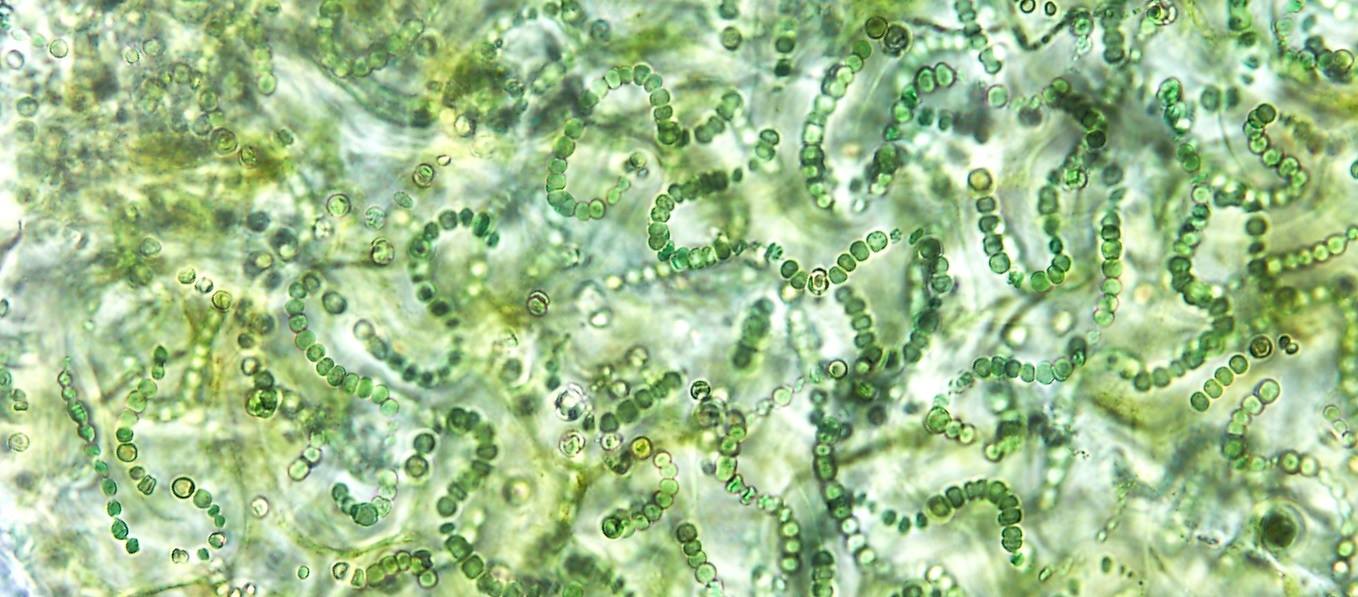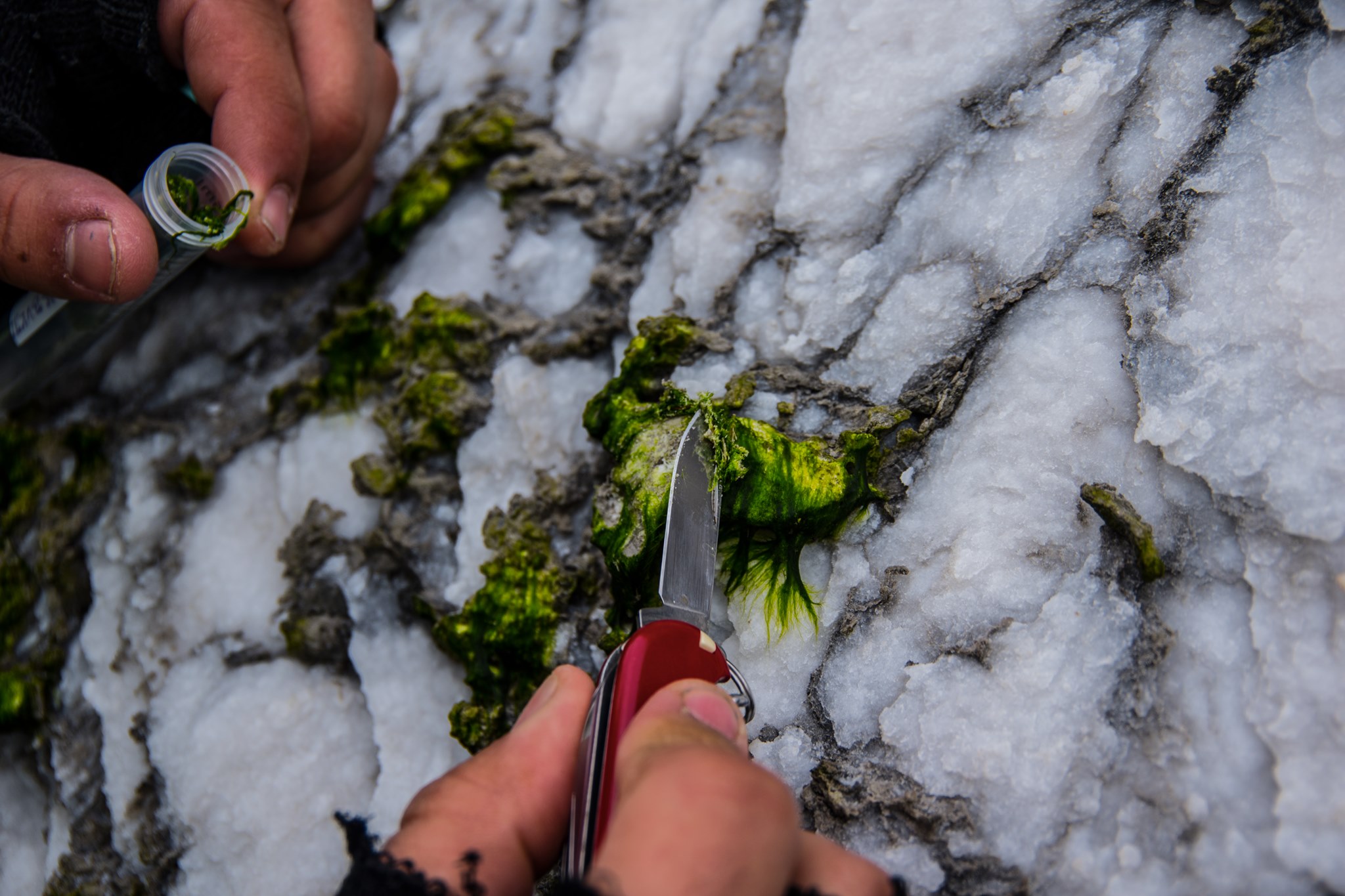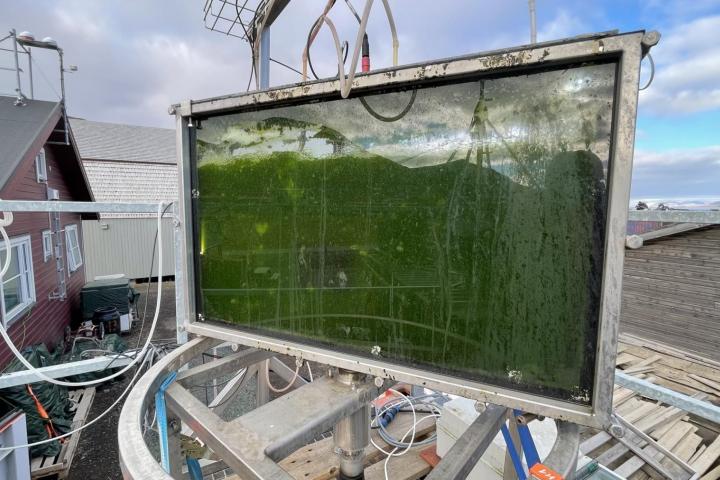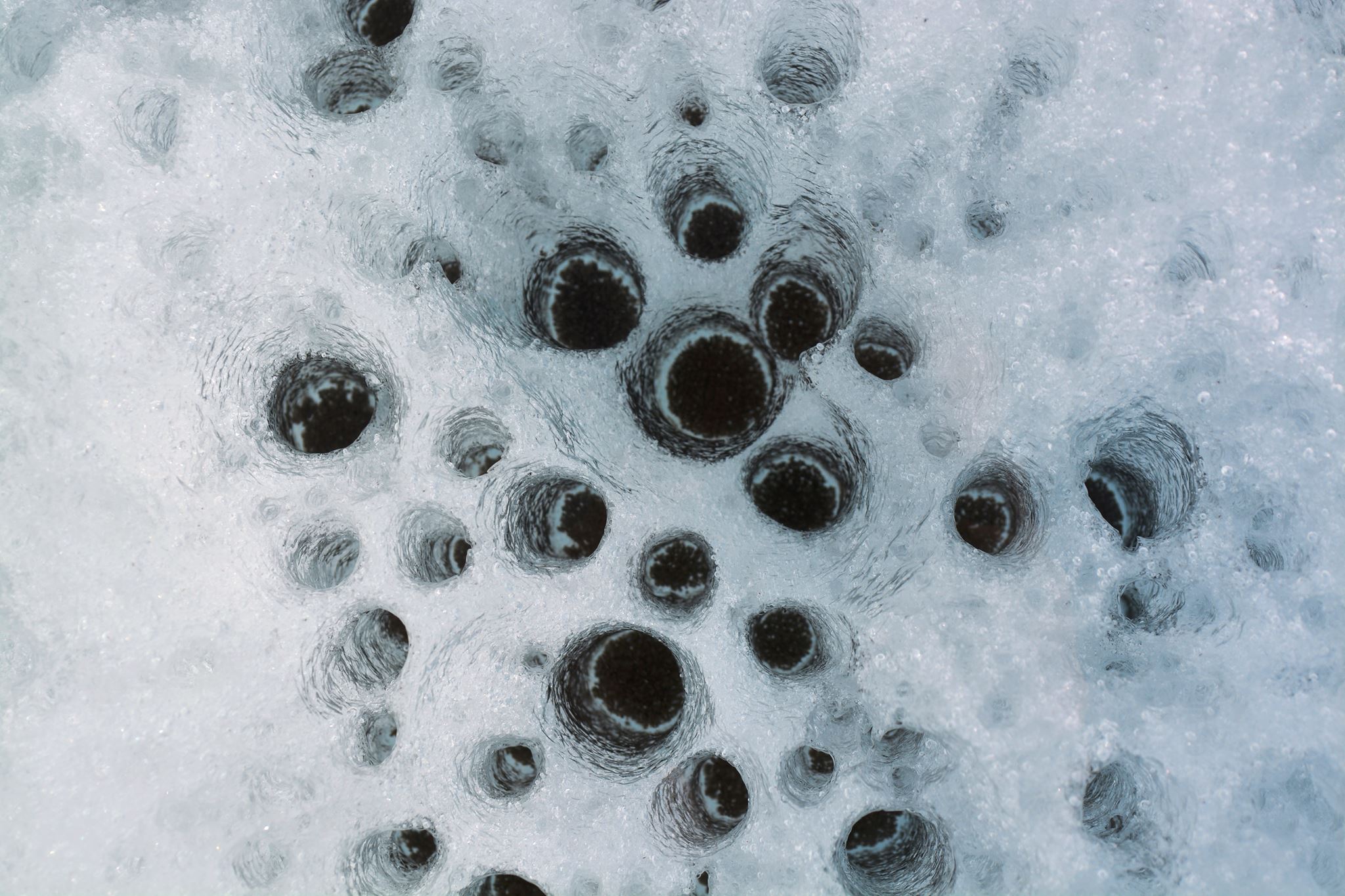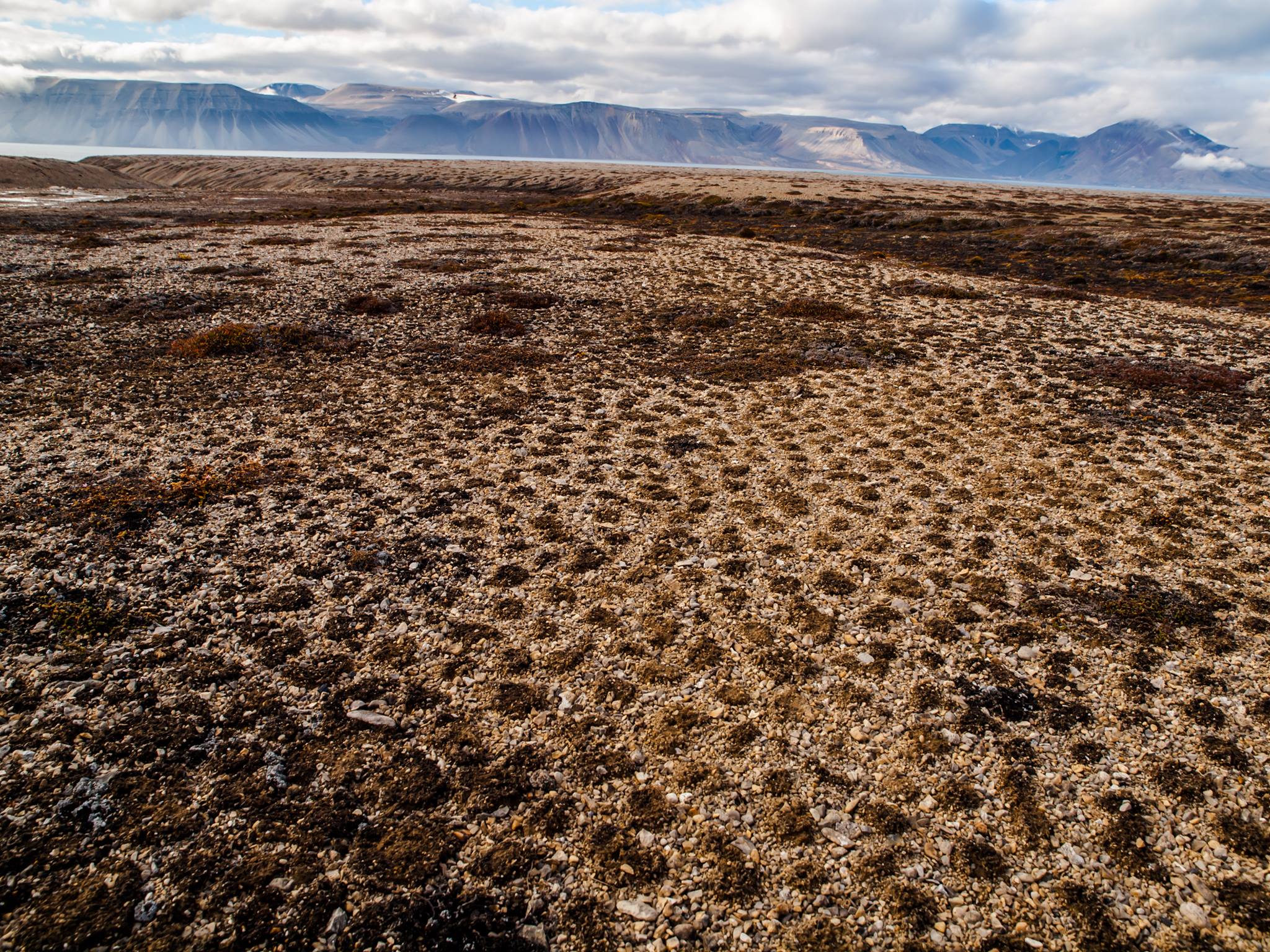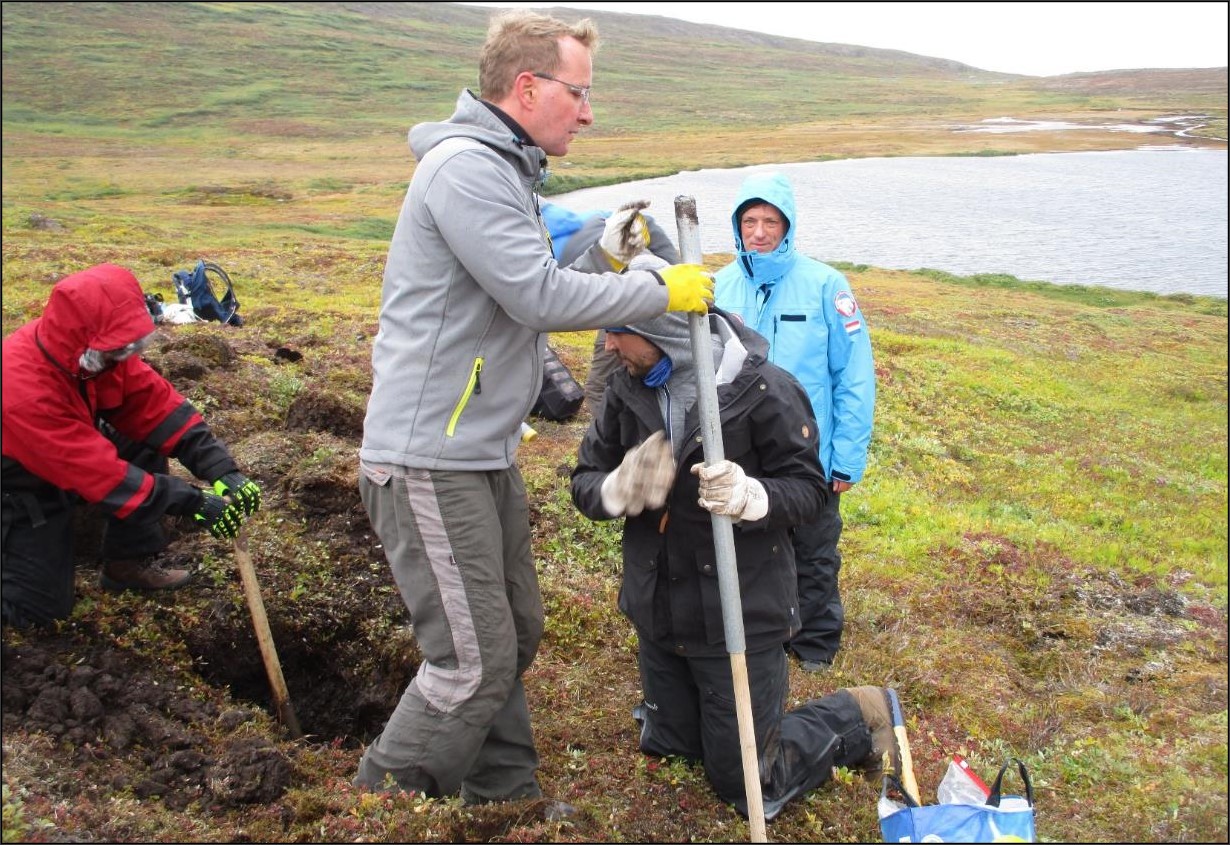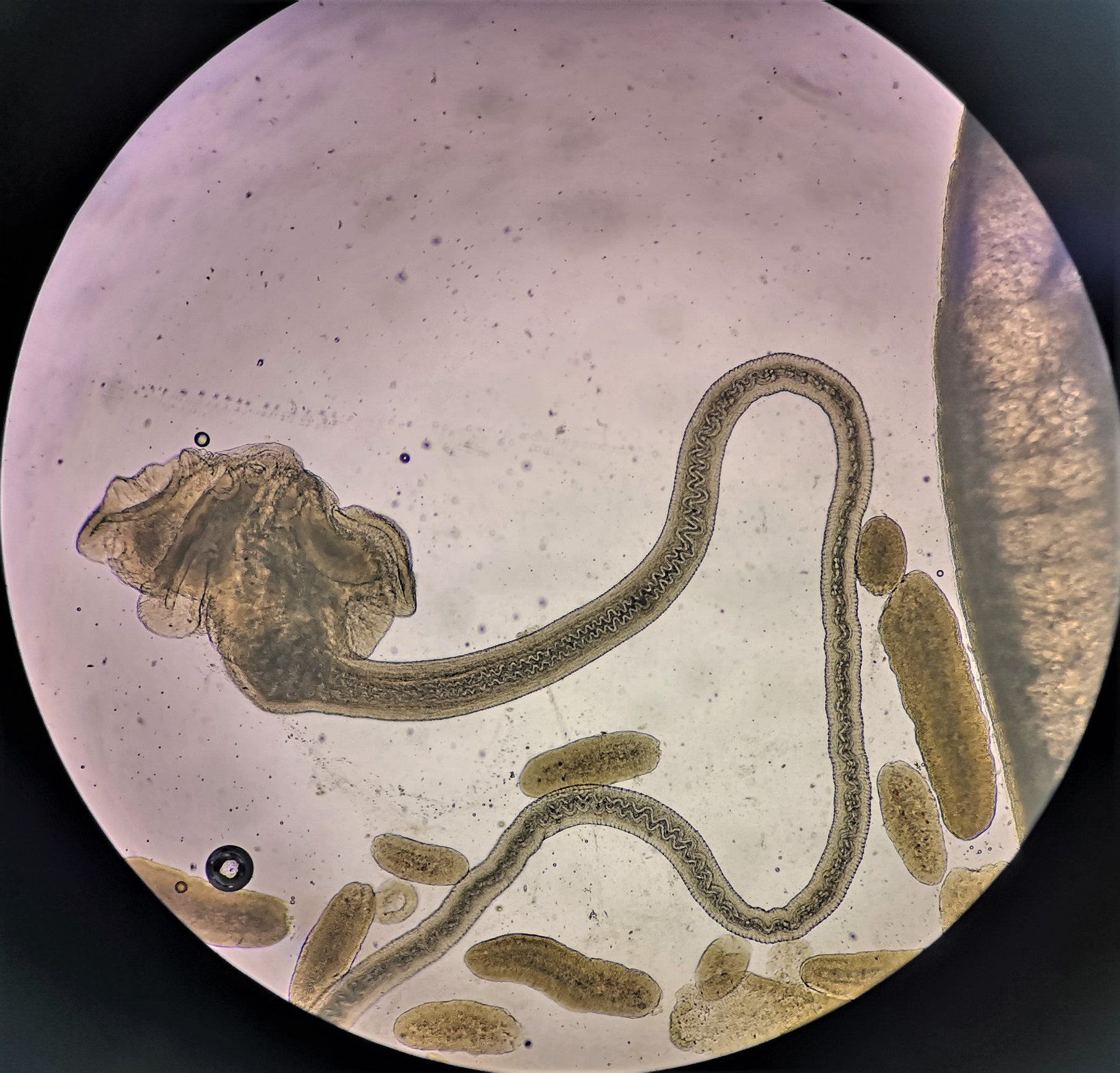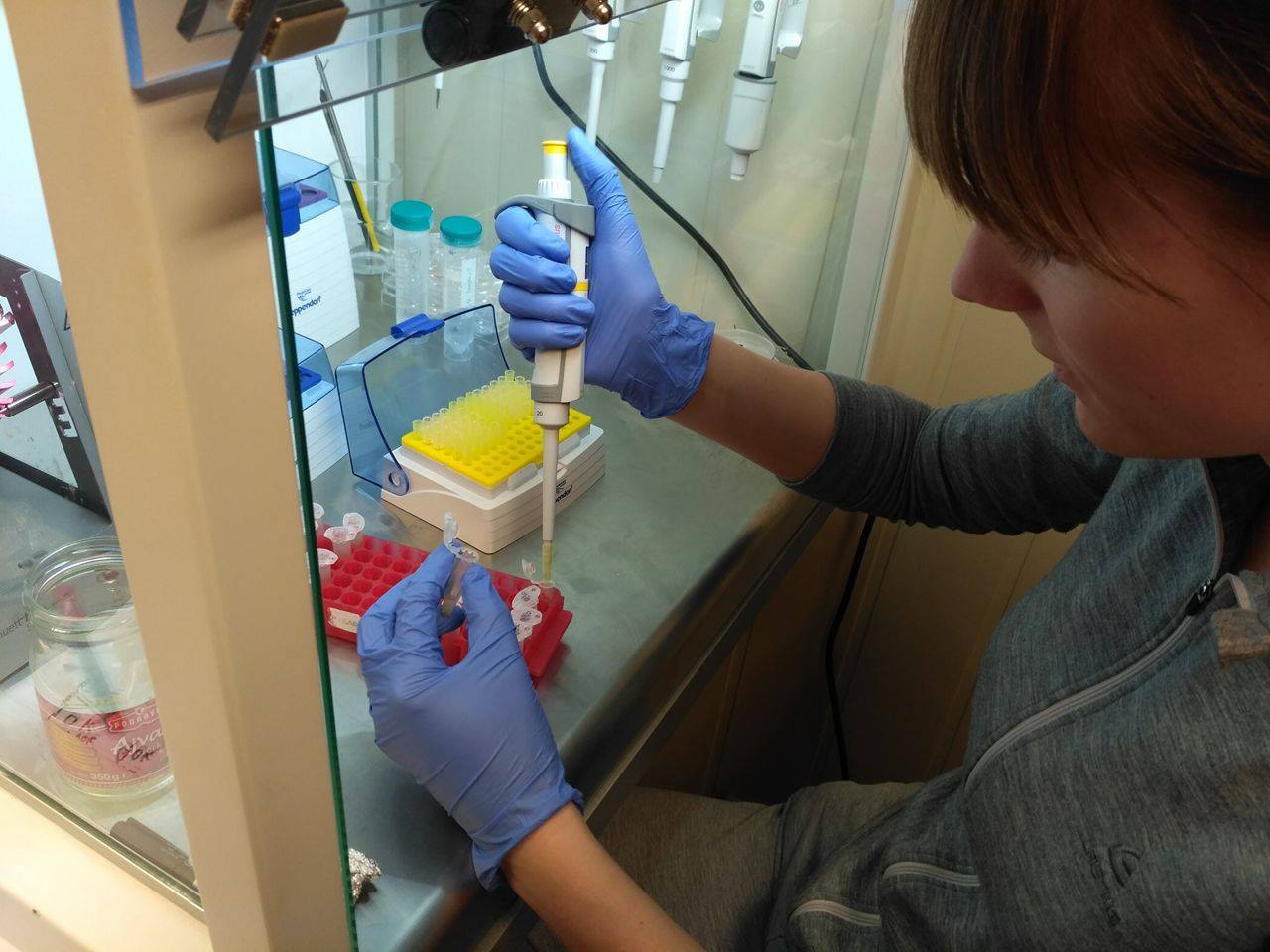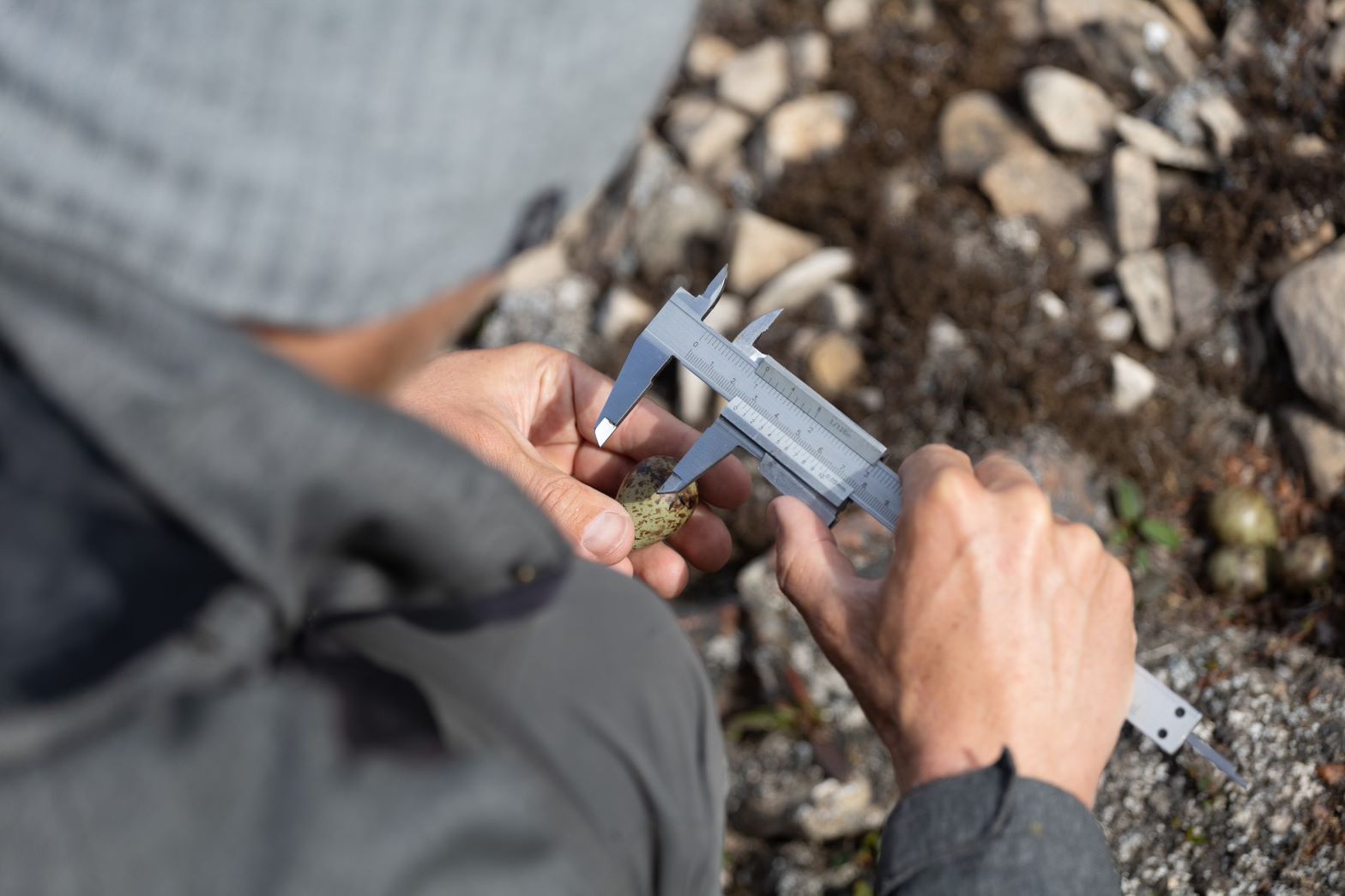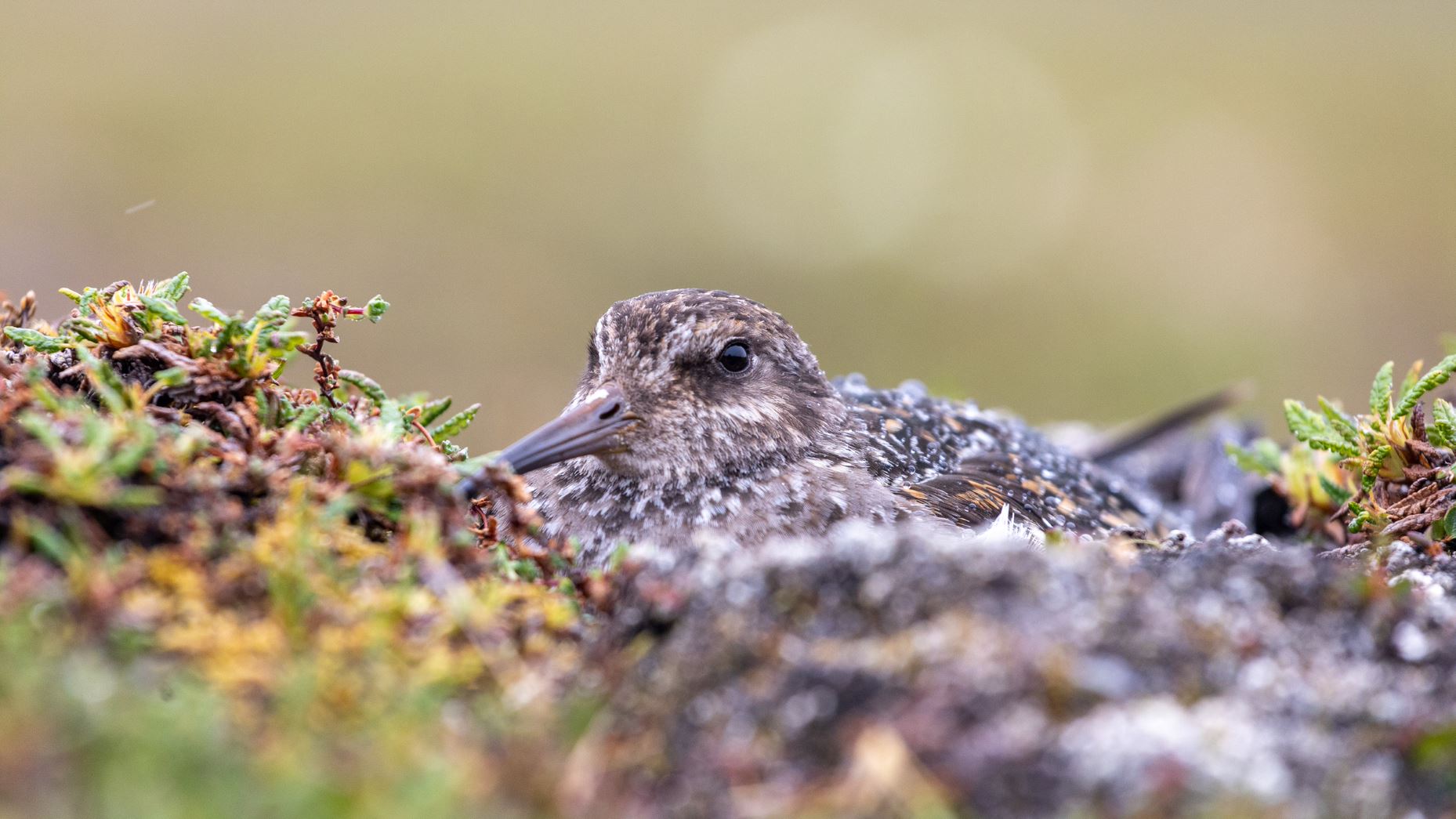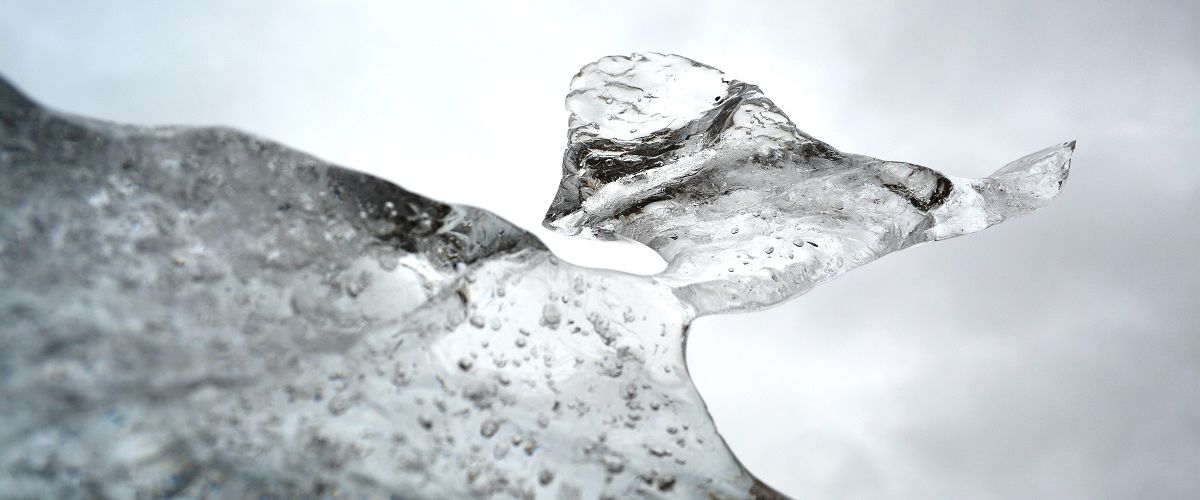
Centre for Polar Ecology
Research groups
Phycology:
- Molecular diversity, ecology and biogeography of cyanobacteria and algae of the polar regions
- Functional characteristics of the cyanobacteria and algae of the polar regions
- Role of cyanobacteria and algae in individual biotopes and the relations among individual ecosystem components
- Biotechnological exploitations of cyanobacteria and algae of the polar regions
The research of the algological group begins with a description of the species diversity of cyanobacteria and algae, which are studied in all types of terrestrial biotopes. Basic environmental factors are then measured in the given biotopes (physico-chemical parameters of soil and water, daily temperature, radiation, transparency, pH, oxygen concentration, conductivity, etc.).
For the taxonomic determination of individual species of algae and cyanobacteria, classic microscopic observation is combined with data obtained from DNA sequences. The ecophysiological properties of polar cyanobacteria and algae are determined using field measurements and laboratory experiments. Field experiments in Svalbard are focused, for example, on monitoring photosynthetic activity, nitrogen fixation, studying the formation of dormant stages of cyanobacteria and algae, or studying photochemical processes in different types of biotopes. Laboratory experiments focus on the determination of the ecophysiological requirements of individual species and the detailed study of their reactions to various ecological factors.
Since 2009, experiments with open top chambers (OTC) have been taking place on Svalbard at several locations, where the effect of mild warming and changes in soil moisture on the communities of cyanobacteria and algae and on the rate of decomposition of selected biotopes is monitored. As a result of increasing temperatures in the Arctic, the use of natural resources in the polar regions and the development of human settlements are developing. To reduce the consequences of human activity on polar ecosystems (e.g. eutrophication of waters) and increase the efficiency of local resource use (e.g. fish farming), a number of new technologies will need to be developed, some of which will be based on the use of native microorganisms. The algal group has already carried out the first tests for the selection of biotechnologically interesting strains and tested the possibility of cultivation at low temperatures.
The algology group cooperates with a number of workplaces, for example with the institutes of the Biological Center of the Academy of Sciences of the Czech Republic, Charles University and the University of Cologne in Germany.
Team members: Josef Elster, Jana Kvíderová, Eva Hejduková, Oleksandr Bren, Anastasiia Kolomiiets
Our group focuses on study of carbon and nitrogen cycles in relation to the composition and functioning of microbial communities and their relationships with other organisms in ecosystems such as tundra, taiga, continental glaciers, lakes.
The main objective of our group is to:
- improve estimates of organic carbon in cryosols (soils affected by permafrost) with a focus on the Eurasian Arctic.
- understand the vulnerability of these carbon stocks in future climate
- improve existing models to better predict the response of permafrost soils, glacies, lakes to future climate conditions
- describe the functioning of microbial communities under extreme Arctic conditions
We are primarily interested in how natural forcing (permafrost thaw) is changing the functioning of these ecosystems, i.e. rates of carbon and nutrient transformation and loss from the ecosystem, species and functional diversity of the soil microbial community, and soil-vegetation relationships.
Our research focuses primarily on describing microorganisms in terms of both diversity and function. Microbial communities include all three domains of life (bacteria, archaea and eukaryotes), which implies that the study of such a complex system is poses a considerable challenge to scientists. In the last decade, new genetic and molecular biological techniques (PCR, sequencing, etc.) have been increasingly applied to study complex microbial communities. It is these that allow us to better describe the processes and the microorganisms responsible for them in complex terestrial and aquatic environments. Last but not least, they allow us to study the interactions between organisms. These new methods are the focus of our molecular biology laboratory.
Knowledge of the chemical and microbiological composition of organic matter and the processes by which carbon, nitrogen and nutrients are stabilized is essential to predict the extent and timescale at which SOC will be remobilized from thawing permafrost under climate change.
We have long-standing collaborations with institutes at the Biological Centre of the Academy of Sciences of the Czech Republic, and with foreign universities in Helsinki, Hannover, Vienna and Uppsala. These collaborations open up the possibility for our students to travel abroad on a placement at a friendly university.
Team members: Jiří Bárta, Muhammad Waqas, Marria Dimova, Monika Strejckova, Simona Zelenkova, Annika Schmidinger, Laura Noskova, Jonas Proger, Sára Turková, Marie Šabacká
Parasitology and Infection Biology
- The study of life cycle of trematodes from the family Opecoelidae occurring in gastropods Buccinium spp.and family Gymnophalidae from bivalves Mya truncata and Hiatella arctica.
- Study of other helminths found in fish and selected invertebrate hosts.
- Examination of tissues and organs if selected vertebrate and invertebrate hosts with the aim of the histological studies of parasites from the groups Apicomplexa, Myxozoa, Microsporidia, Ciliata and the isolation of amphizoic amoebas.
- Mapping of biodiversity of littoral biocenoses
- Intestinal parasites of mammals and birds
Examination of feces using classical coprological methods and molecular analyses. Special attention is paid to parasites of Polar Fox (Vulpes lagopus) and Polar Bear (Ursus maritimus), as well as to parasites of introduced mammals (vole Microtus levis and dog). - Searching for arboviruses and influenza viruses
Using molecular analyses, the mosquitoes Aedes nigripes (larvae and adult females) and ticks Ixodes uriae are examined for arboviruses. Oropharyngeal and cloacal swabs as well as droppings of selected species birds are screened for influenza viruses. Antibodies against bird influenza have been already recorded in serum samples of Black-legged kittiwakes (Rissa tridactyla).
Team members: Oleg Ditrich
Ornithology
Ornithology group focuses mainly on:
- evolutionary ecology, life histories, global comparative insights
- climate change and human pressure impacts and adaptations
- population dynamics, demography, latitudinal gradients
- predation, predator-prey interactions, parasites
- migration, behavioral ecology, breeding associations
- sex roles, mating systems and parental investment
- camouflage and plumage colouration
- Important Bird Areas, conservation implications
When asking important scientific questions, we are often effectively combining independent data at three different levels: i) data directly collected by our team – individual in-depth field studies using a detailed methodology and experimental design; ii) data collected according to unified protocols across an extensive network of 40+ collaborating teams worldwide; iii) data extracted from published and online sources, enabling broad comparative insights.
Our investigations have several important implications. First, we are identifying key climate change, human pressure, and life-history factors affecting breeding performance and survival rates as well as global population trends of wild animals with the use of recently developed demographic models adopting an explicit phylogenetic framework. Second, the exploration of spatial and temporal changes in life-history traits, population dynamics, and social behavior is enabling us to track historic patterns and recent impacts of climate change and human pressure on wild animals in a rapidly changing world. Third, we do care for the outreach and conservation implications of our research, our scientific outputs are being disseminated among conservationists, policymakers, and the wide public in various countries to promote and advocate new specific conservation applications mitigating the impact of recent environmental changes.
We look forward working with highly motivated researchers from all over the world. This may include scientists, conservationists, post-docs, students at various levels, interns, and volunteers. Get in touch with us.
Team members: Vojtěch Kubelka, Guillaume Dillenseger, Miguel Angelo Silva Monteiro, Kateřina Kubelková and Andreas Rimoldi
